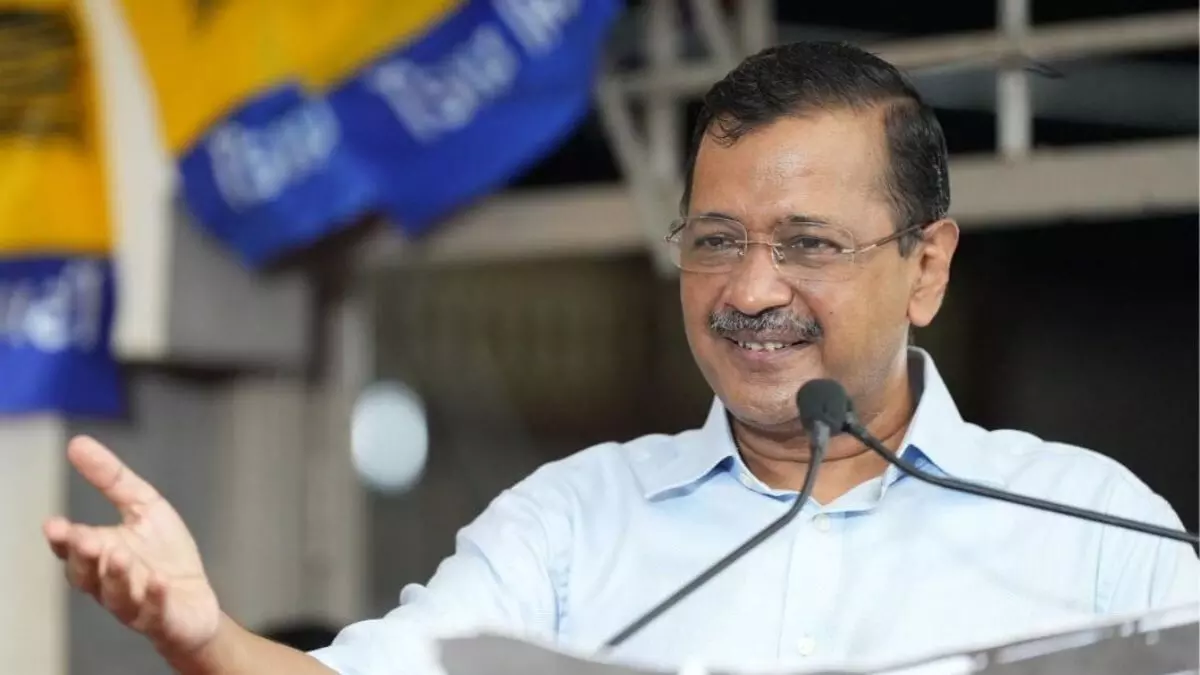Kejriwal’s Gains in Bypolls Signal Strategic Shift Amid Cracks in INDIA Bloc

The recent by-election results announced by the Election Commission of India on June 19 have added fresh momentum to the ever-evolving political dynamics in the country. Spanning five assembly constituencies across four states, the outcomes provide both a glimpse into regional political realignments and early indicators for the road ahead to the 2026 state and 2029 general elections. While the results do not drastically alter the balance of power in any state, they serve as a microcosm of shifting public sentiment—particularly the growing traction of the Aam Aadmi Party (AAP) in regions once dominated by larger national players.
AAP emerged the biggest gainer in these bypolls, clinching two significant victories—in Ludhiana West (Punjab) and Visavadar (Gujarat). The wins are not just about numerical advantage but symbolic positioning. Sanjeev Arora’s victory in Ludhiana West clears the Rajya Sabha path for party supremo Arvind Kejriwal, who has long been a political disruptor with national ambitions. Simultaneously, Gopal Italia’s win in Visavadar, defeating the BJP by a margin of over 17,500 votes, is an unequivocal message that even in Gujarat—long considered BJP’s bastion—the AAP is beginning to register itself as a credible alternative.
Kejriwal’s immediate response to the Gujarat result was sharply worded and politically significant. He claimed that Gujarat’s electorate is "fed up with the BJP" and also disillusioned with the Congress. He hailed the people’s choice of AAP as evidence of a growing hunger for an alternative political narrative. Notably, this posture reinforces a growing perception: AAP is consciously distancing itself from the INDIA bloc, the opposition alliance aimed at taking on the BJP nationally. Kejriwal’s calibrated distance from the bloc, and his claim of being the 'real alternative,' raises questions about the unity and coherence of the INDIA front. The bloc, which was conceived as a grand coalition of anti-BJP forces, appears to be losing its gravitational pull as parties like AAP assert their independent growth.
The Congress, for its part, managed a critical victory in Nilambur, Kerala—a seat nestled within the Wayanad Lok Sabha constituency represented by Priyanka Gandhi Vadra. The win holds symbolic and strategic value for the party, particularly in a state where it jostles for space against both the CPI(M)-led Left Democratic Front and an increasingly aggressive BJP. Congress nominee Aryadhan Shoukath’s convincing lead over the CPI(M)’s M. Swaraj, as well as the poor performance of P.V. Anvar—once a Left-backed independent who later joined TMC—demonstrates the Congress' strong organisational hold and appeal among traditional voters.
Priyanka Gandhi’s celebratory remarks emphasized team effort, discipline, and constitutional values. It’s a message that seeks to rebuild the Congress' image as a coherent and values-driven force. However, whether this one-off win can be scaled up into a broader revival remains uncertain. The challenge is steep: in Kerala, the Congress is squeezed between an entrenched Left and a BJP eager to capitalize on national sentiment.
The BJP, while not making significant gains, held onto the Kadi Assembly seat in Gujarat. This retention is important for morale, especially after losing Visavadar to AAP. It signals that while AAP may be gaining traction, BJP’s base remains largely intact—though susceptible in select pockets. The Kadi seat became vacant after the death of Karshan Solanki, a BJP MLA, and retaining it demonstrates a continuation of loyalty in the heartland.
Meanwhile, the Trinamool Congress (TMC) retained its Kaliganj seat in West Bengal with ease, extending its winning streak in the state. Mamata Banerjee’s statement following the win—thanking voters from all castes and creeds—served to underscore the party’s inclusive appeal. The TMC’s ability to secure continued voter trust even in the absence of a sitting MLA (Nasiruddin Ahmed had passed away) is a testament to its deep organisational network in Bengal. Yet, with assembly elections scheduled for 2026 and an increasingly confrontational BJP in the fray, this dominance will be continually tested.
The underlying message of the bypoll results is not about a dramatic shift but about evolving fault lines. While the BJP remains the national frontrunner, these contests show vulnerabilities. AAP is proving it can break into BJP and Congress strongholds, as seen in both Gujarat and Punjab. Kejriwal’s strategy is clear: expand in regions where voter discontent is palpable and carve an independent path rather than play second fiddle in a larger coalition.
On the other hand, Congress finds itself in a tricky spot. While it can claim success in Kerala, the broader picture—especially in Gujarat and Punjab—shows erosion or stagnation. The INDIA bloc’s strength was supposed to lie in collective synergy, but AAP’s go-it-alone victories and strategic posturing signal the alliance’s fragmentation.
As the political landscape continues to reconfigure, the bypolls serve as a crucial temperature check. Voters are sending nuanced signals—they are not overwhelmingly rejecting any one party across the board, but are instead opting for balance, alternatives, and localized issue-based decisions. For national parties, especially those hoping to present a united opposition front, this demands introspection, recalibration, and most importantly, unity—not competition. Whether they can rise to the occasion remains to be seen.
